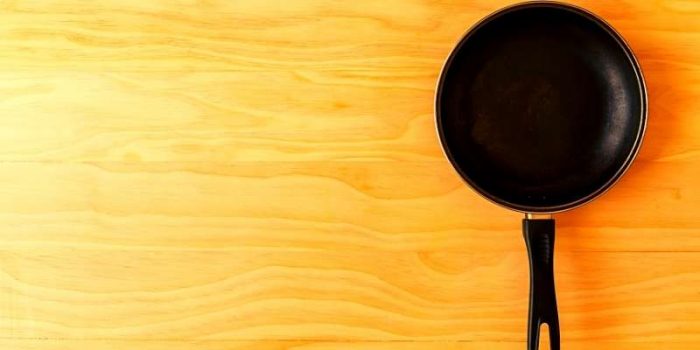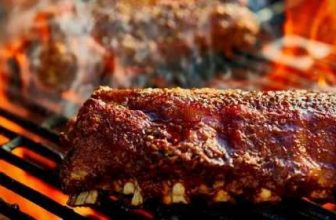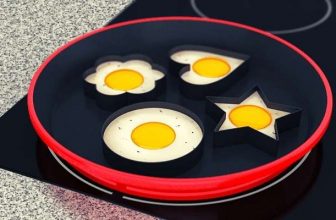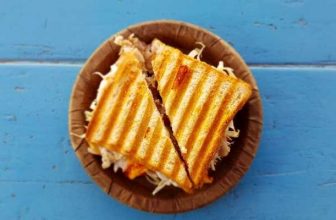Non-stick cookware is a go-to in the home kitchen. Whether we are talking about frying things or grilling them, a lot of people prefer non-stick pans.
These pans come with a multitude of perks that make them a must-have in many kitchens. On them, you may Best Nonstick Pans And Pots | Buying Guideprepare meals. Greasing or cleaning them isn’t a big deal either.
But, professional chefs don’t use them, which raises an essential question:
Best Nonstick Pans And Pots | Buying Guide
Why Don’t Chefs Use Them?
Well, there are a lot of answers to it, and we are here to talk about them all. We will also focus on their qualities and the cookware that chefs favour. All of these resources will help you gain a deeper understanding of the realm of culinary creations.
What Is Non-Stick Cookware?
The name alone tells you quite a bit about the person. Non-stick cookware features surfaces to which food doesn’t stick. There’s no point in worrying about whether they’re burning or not because neither factor is relevant. Food will be able to slip right off of it.
The surface of such pans is coated with Teflon to ensure its non-stick function. Cookware made of anodized aluminium or copper was not uncommon in ancient times.
The Teflon coating is not permanent, although it lasts for a long period depends on how the pan is used. Overall, this cookware will not disappoint you.
What Pans Do Professional Chefs Use? (This Includes Chefs That hold Michelin Stars.)
Metal cookware is the preferred choice of professional chefs because it is durable and provides an even dispersion of heat. Such cookware allows them perfect their dishes. And with a uniform heat spreading procedure, they will not be wasting any of their time or energy.
Stainless steel, carbon steel, and cast iron cookware are the most popular choices because of their durability. These pans last for a long time and don’t require a lot of care. Cast iron, for example, is great for frying or grilling because of its particular properties.
Copper cookware is usually the most chosen among chefs when it comes to proper heat distribution. Aluminum is a more cost-effective alternative, but no other material compares to its conductivity.
Toxic ingredients are also avoided whenever possible by chefs. Because of this, they will only buy anodized or lined copper or aluminium cookware.
10 Best Sets of Pots And Pans
What Are The Differences Between Home Cooking And Professional Cooking In Terms Of Cookware?
Cooking in a professional kitchen is a completely different experience than cooking in your own kitchen. In addition to the approach itself, the scale and equipment required are wholly distinct.
Restaurants cater to many clients every day. So, chefs must perform fast and efficiently. They must employ enormous machinery and high heat to whip up food at a rapid speed to suit consumer expectations.
Because of this, chefs require pots and pans that can tolerate repeated usage and are resistant to damage from impact. The cookware should be able to sustain regular usage with minimum maintenance and care. In this sense, the following forms of construction material function best.
Stainless Steel
Stainless steel is practically indestructible since it can endure high temperatures and does not rust. This material also has the advantage of being extremely easy to clean. As a non-reactive metal, stainless steel is ideal for cooking a wide variety of foods.
Most stainless-steel pans are dishwasher safe as well. Hence, stainless steel is a perfect choice for professional cooking.
Professional chefs prefer to use stainless steel pans for creating sauces and sautéing. They do not frequently utilise it for deep frying.
However, professional chefs favour thick stainless-steel pans over light ones. It’s safer to use something with a thicker base. Overheating and warping are common problems with the thinner models.
You may also buy stainless steel pans with the base comprising layers of copper or aluminium. These additional layers make the base sturdier and more able to handle intense heat.
Carbon Steel
For the most part, professional chefs prefer carbon steel pans to those made of cast iron. These pans can withstand rigorous handling in addition to being more durable. You can knock and drag them on stoves without causing any damage.
They are lightweight and simple to maintain. Like cast iron, carbon steel pans provide a charred or smoky flavour when cooked.
Cast Iron
Cast iron is hefty and tolerates high heat. If properly cared for, it has a long lifespan and provides even heat distribution. The result is that you can cook quickly and effectively with it.
However, cleaning might be a difficulty as cast iron rusts when it is not dried well. As a result, professional chefs in restaurant kitchens rarely employ it. They may use it for frying eggs and preparing fried rice. When it comes to personal use, they normally say to avoid it.
Ceramic
Professional chefs often choose ceramic pans over their non-stick equivalents because they are more durable.
Ceramic is a natural non-stick substance. It tolerates high heat and can be utilised for a range of cooking applications. It is also incredibly easy to clean and lasts long with minimum upkeep.
Aluminum
Chefs and home cooks alike love aluminium for its versatility and ease of usage. Aluminum pots and pans provide an uniform distribution of heat and can cook cooking quickly.
These pans are easy to clean. Being lightweight is another advantage. Chefs can manoeuvre them effortlessly and utilise them furiously. Enamel-coated or anodized aluminium pans, which are more durable and more appealing than plain aluminium ones, may be preferred by professional chefs.
Now that we have reviewed the most popular materials used by professional chefs in restaurant kitchens, let us also look at the many types of pans they employ.
You may already know that different recipes call for different types of pans. Consequently, a variety of pans for diverse cooking operations, such as chopping and sauteing as well as shallow and deep-fry frying will be available in professional kitchens. Let us investigate these different forms of pans in deeper depth.
The Best Pots and Pans for Gas Stove: Buying Guide 2021Where Can I Find Jamie Oliver Pans?
Everybody has heard of Jamie Oliver.
Millions of people have been inspired by the celebrity chef to prepare healthy meals from home. He even has a collection of delectable dishes in his booklets and performances.
When it comes to making these delectable dishes, Jamie Oliver uses his go-to collection of pots and pans.
Jamie Oliver has numerous favourite pans. T-fal is the most popular brand.
Hard-Anodized Frying Pan
Frying pans are important cookware in all kitchens, and Jamie Oliver’s kitchen is no exception!
- Made with anodized aluminium, the composition of this pan offers efficient heat distribution for even cooking. However, one of the major reasons why Jamie Oliver likes this pan is its thermo-spot technology. This alerts him when the pan has reached the ideal temperature for him to start cooking.
- 2. The pan’s exterior is hard anodized, and the interior is nonstick, so it will last a long time.
- 3. In reality, the interior is ultra robust and strengthened with titanium particles for great resilience. This protects the pan from damage and ensures that food won’t adhere to it.
- 4. The oven-safe stainless steel handles of the pan are normally riveted. They’re made with a silicone grip on the underside for a secure and comfortable fit.
- 5. Lastly, these pans include a flared lip for convenient drip-free pouring.
A Pan Made Of Copper
For a professional cook like Jamie Oliver, one frying pan isn’t sufficient!
- Tefal’s 28-cm copper frying pan comes in at number two on his list. These pans are elegant, stylish, and lend a lovely look to Jamie Oliver’s kitchen. These frying pans, however, are more than just eye-catching. The tri-ply construction shows off their craftsmanship.
- This implies they have copper on the base, aluminium sandwiched in the middle, and stainless steel on the outside.
- As a result of the pan’s try-ply design, heat is distributed quickly and consistently. These pans are primarily used by Jamie Oliver to sear steaks and make tomato sauce, among other things.
- The copper frying pan has a magnetic stainless steel outer layer and a high-impact bonded base. This allows Jamie Oliver to use this pan on all types of hobs, even induction cooktops!
- Like the hard anodized frying pan, the copper frying pan also has solid, riveted stainless with a silicone insert. As a result, using the pan is both safe and comfortable.
- Serving is a cinch thanks to the pan’s convenient pouring edges.
- Another feature Jamie Oliver like about these pans is that they’re fantastic for both cooking and serving.
Stainless Steel Frying Pan
Stainless-steel Tefal’s premium range frying pans are Jamie Oliver’s third go-to frying pan. These pans are quite attractive with a fantastic and enticing design.
- The iconic Tefal non-stick coating provides a smooth cooking experience in this stainless steel frying pan.
- The pan is heavy at 1.5 kg, but it’s easy to move around. Jamie Oliver likes to use this pan for cooking eggs for breakfast for his adorable girls.
- The stainless steel frying has a lot of qualities similar to the anodized aluminium frying pan and the copper frying pan.
- For instance, it’s got riveted stainless steel handles with silicone that makes it safe and comfortable for usage.
- Not to forget, the thermo-spot technology turns the pan into a solid red hue when it has attained the perfect cooking temperature.
- Because of the pan’s all-around pouring rims, no dripping occurs when Jamie Oliver uses it.
Professional Chefs Use A Variety Of Pots And Pans.
Saucepans have a circular base, high sidewalls, and a long handle. They can contain a good quantity of liquid.
Sauce-making isn’t the only thing you can do with saucepans, despite their name. Pasta, stews, soups, and curries all benefit from their inclusion. You can also use it for boiling and simmering liquids, and stewing.
Pots and pans come in many forms and sizes, as well as a variety of materials. Most chefs favour carbon steel or stainless steel saucepans. Because copper is a superb conductor, copper saucepans are an excellent choice.
Professional Chefs’ Favourite Frying Pans
Frying pans have a flat base and slightly elevated sidewalls. You can use these pans for searing, roasting, shallow frying, and deep-frying. Chefs utilise frying pans in kitchens to produce a range of delicacies, including stir-fries, omelettes, and batter-fried recipes.
Because of their light weight, aluminium and carbon steel frying pans are popular choices among professional chefs. Durability and resiliency are two further advantages to using these materials.
Some chefs also enjoy cast iron frying pans because they heat evenly, and the substantial base is helpful for uniform cooking. Cast iron pans develop a layer of seasoning with repeated usage. This layer creates a natural non-stick surface.
For frying or cooking big amounts of food, a skillet is frequently preferred. These pans are thicker and heavier than frying pans. They hold higher quantities of food. Skillets are commonly composed of carbon steel or cast iron.
11 Best Fry Pan For Versatile Cooking
What Griddle Pans Do Professional Chefs Use?
Fry pans with the bottom featuring parallel ridges are known as griddle pans. Despite the fact that it is used on a burner rather than a grill, the innovative design imparts a mouthwatering grilled flavour. The ridges will also make attractive char marks on meat or veggies.
Professional chefs use griddle pans for cooking pancakes, eggs, grilled meat and veggies, and burgers. They choose cast iron griddle pans because of their substantial base and uniform cooking qualities.
How Do Chefs Use Non-Stick Cooking Pans?
Non-stick pans are more delicate than other pans. Hence, they are rarely recommended by professional chefs. High temperatures and rigorous handling are no match for non-stick cookware. Hence, they are rarely found in professional kitchens.
Except for delicate fish or egg dishes, this rule does not apply. Cast iron or ceramic pans, which have been seasoned, are the most commonly used nonstick cooking pans by chefs.
What Pans Do Michelin Chefs Use?
Michelin chefs use a vast selection of pans for making diverse recipes. The quality of the pan’s structure and the material it is made of will influence the dish selection.
Stainless steel multilayer cooking pans constructed from high-quality material are preferred by many renowned chefs. Copper pans of the highest grade are preferred by some of them.
Alinea and Le Bernardin, two Michelin-starred restaurants, use carbon steel pans because of their lower cost. Surprisingly, several chefs like Gordon Ramsay utilise high-quality PFOA-free non-stick pans with a hefty base for cooking.
Is HexClad Truly Used By Ramsay?
Ramsay remarked, “I use the HexClad pans, and the combination of stainless steel and nonstick capability is excellent. It’s incredibly flexible and cooks exceptionally nicely. The HexClad team and I are looking forward to developing a new line of stunning, high-quality items together.”
Therefore, Here we’ve ended all the information regarding the “Do Professional Chefs use non-stick pans.” We sincerely hope you’ve benefited from reading this post. Please leave a comment if you have any questions or comments about this post.
Thank you, Happy day, everyone.
Best Cookware Brands | Buying Guide








